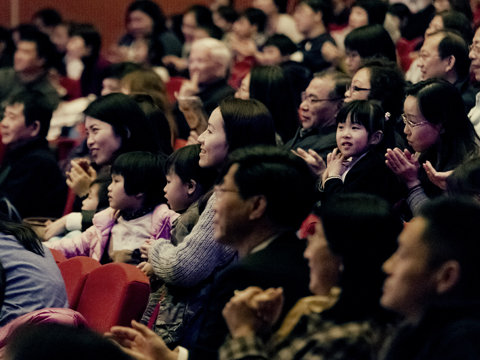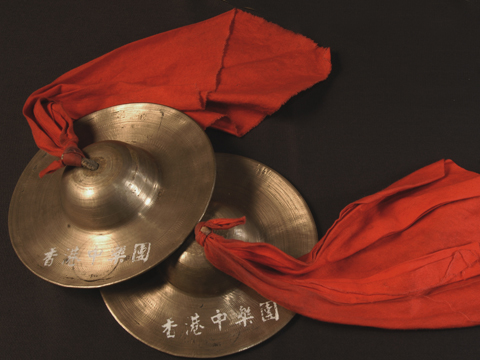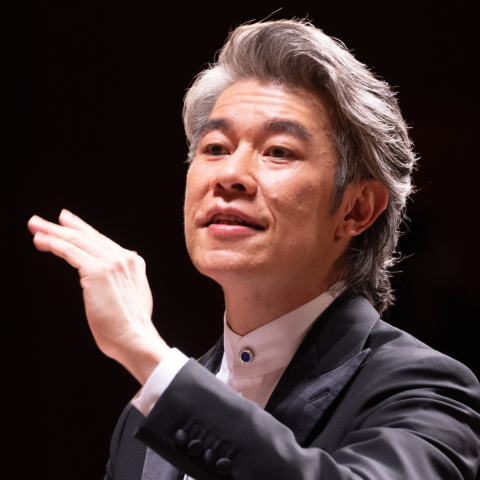

HKCO
Hong Kong Chinese Orchestra Environmental, Social and Governance Artistic Director and Principal Conductor for Life Orchestra Members Council Advisors & Artistic Advisors Council Members Management Team Vacancy Contact Us (Tel: 3185 1600)

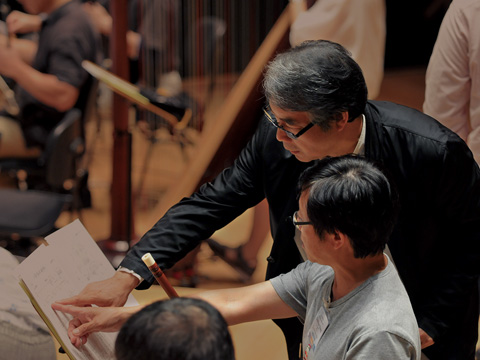
What's On

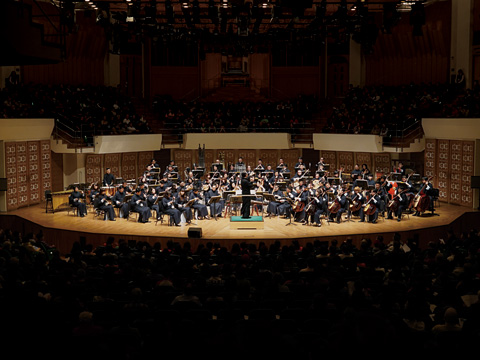
Concerts

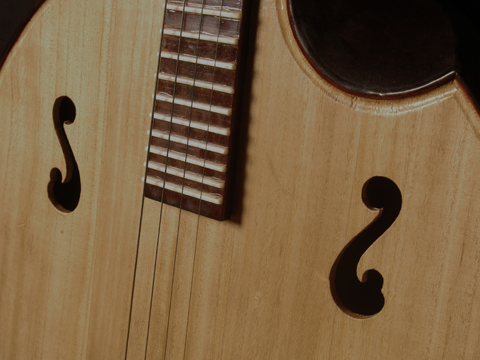
Education
The HKCO Orchestral Academy Hong Kong Youth Zheng Ensemble Hong Kong Young Chinese Orchestra Music Courses Chinese Music Conducting 賽馬會中國音樂教育及推廣計劃 Chinese Music Talent Training Scheme HKJC Chinese Music 360 The International Drum Graded Exam

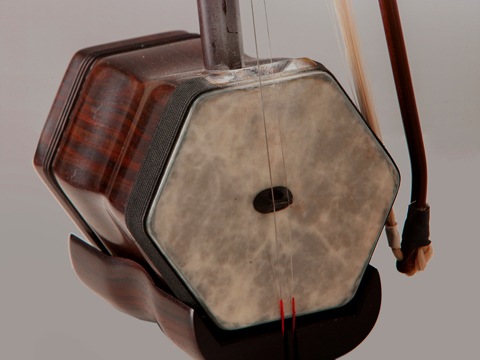
Instrument R&D
Eco-Huqins Chinese Instruments Standard Orchestra Instrument Range Chart and Page Format of the Full Score Configuration of the Orchestra
48th Orchestral Season
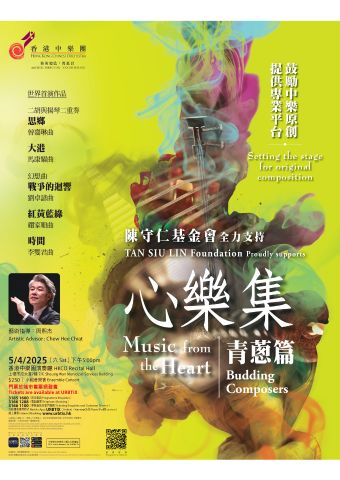
Supported by TAN SIU LIN Foundation
Music from the Heart - Budding Composers
In Association with Education Bureau
Invigoration
Music from the Heart was first set up by the HKCO in 1999 as a dedicated platform for grooming young composers. Each year, we select and perform the works of participating composers. The programme has since been added a post-concert reception for the composers, the orchestra and the audience to interact. Eligibility to participate has also been expanded in recent years to include composers in the Greater Bay Area.For over two decades, generations of young composers have come to prominence through this programme. The Music from the Heart concert is a celebration of these young talents for reaching a milestone in their musical quest.
World Premiere
Erhu and Yangqin Duet Longing for Homeland Tsang Ka Lam
The Kaohsiung Harbour Ma Hong Yiu
Fantasia Echoes of War Lau Cheuk Yin
Colours of Nature Huon Ka Shun
The Times Li Sheung Kwan
The concert runs approximately 60 minutes without intermission.
Erhu and Yangqin Duet Longing for Homeland Tsang Ka Lam (World Premiere)
The piece opens in a minor key, depicting the protagonist's sorrow as livelihood forces him to leave home, conveying poignant reluctance to part with family. The yangqin's pentatonic passages articulate his resolute decision to depart. Then an elegant erhu melody introduces the first movement, accompanied by the yangqin's arpeggios, evoking the passage of time. Snow begins falling gently, as the accompaniment's rhythm transforms, the intensifying musical texture mirrors both the strengthening snowfall and the protagonist's shifting emotions.
In the dual-melody section, the protagonist shows his full of inner conflict. Yearning for familial reunion versus harsh reality. The yangqin's double-note tremolos express his anxious resignation to providing for the family. Mounting agitation is reflected through tightening rhythms and dissonant intervals. Upon receiving a letter detailing his family's struggles and longing, the protagonist understands his responsibility. A process of catharsis unfolds - the second movement restates the main theme with restored arpeggios, achieving emotional equilibrium. Gazing at the luminous moon, he finds solace in steadfast devotion to his family's future.
The composition employs a rich palette of musical techniques to articulate the protagonist's emotional journey and psychological transformation.
The Kaohsiung Harbour Ma Hong Yiu (World Premiere)
I can never forget the breathtaking seascape of Kaohsiung Harbor. This three-movement work unfolds in free form:
I. Fishing Port
The movement evokes Kaohsiung's rustic harbor in the past through wave-like thematic undulations. Lyrical climaxes dissolve boundaries between sea and sky in cathartic release.
II. City Lights
Modern development coexists with the harbor's timeless beauty. Polymetric transitions showcase orchestral sections
alternately, while the return to 4/4 time drives upward like a hopeful seedling reaching for light.
III. Legacy
The first movement's themes return with heightened fluidity. The climax propels the motif to its zenith—a musical prayer that Kaohsiung may forever preserve this unforgettable vista.
Fantasia Echoes of War Lau Cheuk Yin (World Premiere)
Inspired by the anti-war novel All Quiet on the Western Front, this composition adopts a soldier's perspective to recount the experiences of Paul, the protagonist in World War I.
The book profoundly inspired me a lot. It depicts how an 18-year-old youth, who supposed to have a bright future, became trapped in war's torment and seduction, and ultimately perishing on the battlefield. Some may view such acts as heroic. But to me, they represent an unbearably tragedy. If there was no war, far more people could live in happiness!
This three-movement fantasia weaves three contrasting themes and melodies, each diverging dramatically in emotion and
harmony. It begins mysteriously, reflecting the soldier's naive anticipation before entering combat. The second movement erupts into relentless battle, seemingly thrilling yet underscored by jarring dissonance. When a pentatonic chord
abruptly introduces the third movement, the surviving soldier, who surrounded by fallen comrades and bloodstained hands, confronts his isolation and crumbling psyche. His hope for the world fades as the piece concludes with an unresolved chord. This piece is a musical protest against war's injustice.
Colours of Nature Huon Ka Shun (World Premiere)
The school I am studying has the concept for “Houses”. Each student will be allocated randomly into one of the 4 houses
-- Sun, Moon, Sky or Ocean during admission. The 4 houses organized competitions throughout each year, including Athletics Meet, Swimming Gala and Debating. During sports events, the House Captains and Committee Members will lead the members to cheer for their respective houses.
The composer selected one special slogan from each house, and formed 4 different sections of the piece. The four sections and their respective slogans are listed below:
1. Fiery Sun -- Sun House Sun House Go Go Go. Break the Record Hit the Goal.
2. Tender Moon -- Go Go Go Ahead. Be Be Be the Best. Go Ahead Be the Best. Moon House is the best.
3. Ambitious Sky -- Give me an “S”. Give me a “K”. Give me a “Y”. I say “SKY” you say “CHAMP”.
4. Infinite Ocean – (English translation) Our voice reach to the sky. Our team win you all. We are the winner who take all. You are the ones who envy us.
The Times Li Sheung Kwan (World Premiere)
Everyone has their own life. Some dwell on past regrets. Some dream of the future and some care the present moment. In composing The Times, I do not judge these perspectives. After all, reflecting on history, grounding in the now, and yearning for tomorrow collectively frame human existence. Yet what exactly do we seek? What future do we truly desire? Perhaps The Times may unravel fragments of this enigma, tracing one's spiritual odyssey in pursuit of inner ‘answers’.
The work contains three movements:
I. Gradual Decay
Pizzicato strings mimic clockwork gears as corrosive thoughts erode the soul, the torment of clinging to obsessions.
II. Bygone Days
A gong's resonance transports us to forgotten splendors. In newfound serenity, the past reveals its unexpected
romance.
III. Future
Exotic dance rhythms interweave with Eastern wind-percussion brilliance. The mechanical ‘tick-tock’ transforms into a vibrant dance of temporal fusion, where ancient and modern timbres coalesce.
Scored for Chinese orchestra with modernist touches, this piece employs Dorian mode as its foundation, unlocking each instrument's latent possibilities to deliver a unique sonic journey.
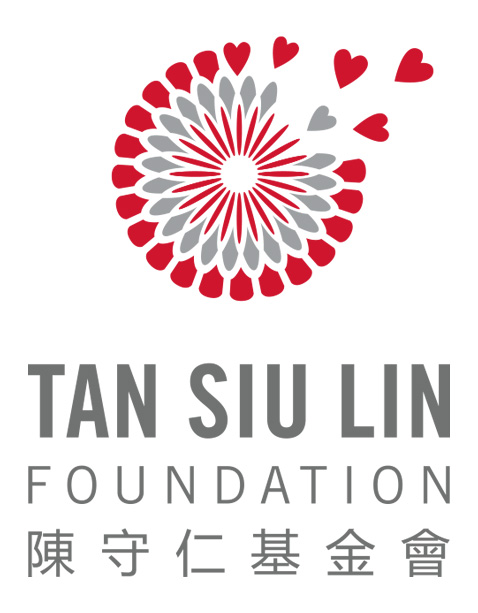
Your Support
Friends of HKCO
Copyright © 2025 HKCO
